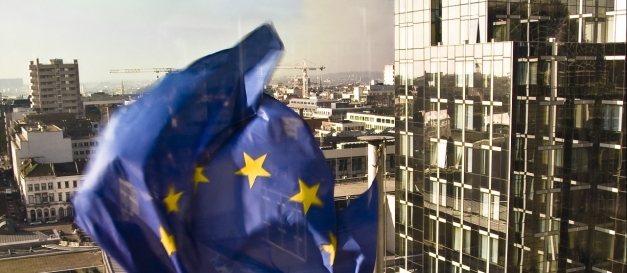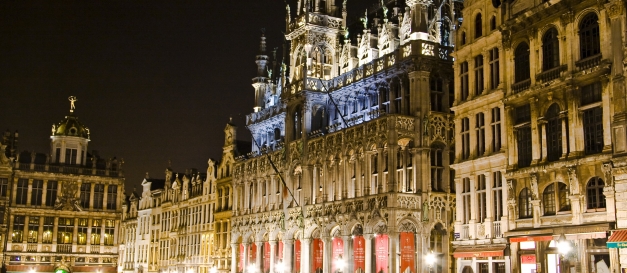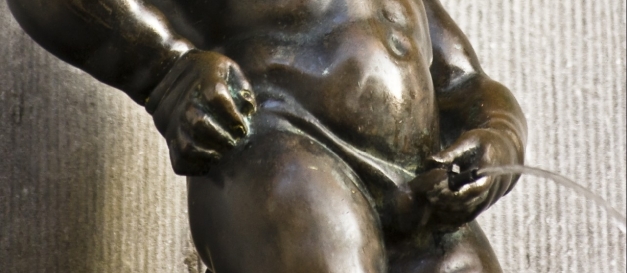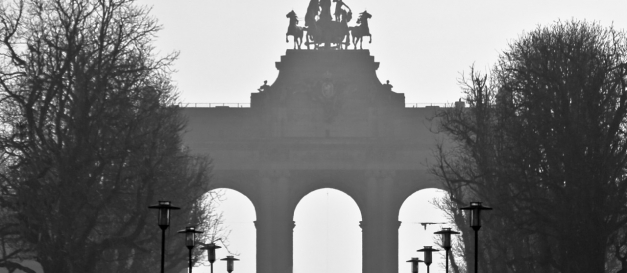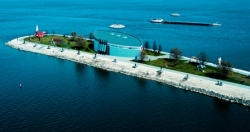Places to visit
Several towns sheltered by the Small Carpathian hills in the wider Bratislava Region, all within an easy day trip of the capital, have rich histories – and the architecture and cultural attractions to prove it. A select few enjoyed the status of royal free towns within the Hungarian Kingdom, mainly due to their role in the wine trade: as well as Modra, famous for its distinctive pottery, and Pezinok, home to dozens of winemakers. Pezinok, the site of the National Wine Salon – where you can try a selection of Slovakia's 100 best wines – is a 20-minute train ride from Bratislava's main railway station. Svätý Jur is another small town with an attractive centre and a winemaking tradition which enjoyed royal free status. All of them are only minutes away from Bratislava by rail or road. In between are dozens of vineyards, many with cellar-door sales, including the starkly modern Elesko winery, restaurant and modern-art gallery near Dubová.
Pezinok -to get a sense of the depth of the winemaking tradition in this region, and indeed across Slovakia, Pezinok is the best place to go. That's because in addition to some charming old buildings, most notably the town's 17th-century town hall, or radnica, Pezinok is home to the Small Carpathian Museum of Viticulture, as well as the National Collection of Wine.
The location of the National Collection of Wine – Národný Salón Vín, in Slovak – is equally interesting: it is also housed in a historic cellar, this one beneath Pezinok's manor house, or zámok. Formerly owned by the ubiquitous Pálffy family, the house itself is now in private hands but the cellars are open to the public. As well as a collection of huge oak casks which once stored 200,000 litres of wine, the intimate arched chambers now contain a selection of the hundred best wines from across Slovakia's six distinct winegrowing regions. The selection is renewed each year; the current choice was made by a Salón jury from 340 samples which emerged during 16 preliminary competitions. All the wines are now available for tasting: groups of six or more can try a selection of reds and whites with the help of an English-speaking sommelier; or individual visitors can make their own choice from the entire range.
For more information please visit: www.nsvsr.sk
Červený kameň is the largest intact castle in Bratislava Region that is fully open to visitors. Originally built as a fortress, it was converted into a enaissance-baroque palace by its last private owners, the Pálffy family, in the seventeenth century. The courtyard and one of the castle's massive bastions (with fine views over the surrounding countryside) is freely accessible; paid tours allow visitors to explore other parts, including the castle museum and the huge cellars. Foreign-language tours are available in English, German and Russian, but should be pre-booked.
For more information please visit: www.hradcervenykamen.sk
The Small Carpathian Museum has a large and imaginatively presented range of wooden wine presses and other winemaking paraphernalia; in fact, its 37 presses represent the largest collection in central Europe. The oldest, a 3.5-metre-tall solid-oak block press which was in use in nearby Svätý Jur until the mid 20th century, dates back to 1608. The bulk of the collection is made up of oak spindle presses of more recent vintage. These look archaic but they are effective, and similar technology remains in use in family vineyards in the Small Carpathians to this day. Informative tours of the museum are offered in English and German, accompanied by a series of short narrated videos describing the evolution of winegrowing techniques in the area. The handsome building that houses the museum, which is opposite the radnica, is interesting in itself; its ancient cellar served as a winemaking centre until the 1920s.
For more information please visit: www.muzeumpezinok.sk
Devín - a village at the confluence of the Danube and Morava Rivers about 12 kilometres west of Bratislava, is the site of a dramatic ruined castle and a good place for a traffic-free riverside walk.
The scenic village of Devín has several attractions: a romantic ruined castle, a museum containing artefacts from its long history, a traffic-free cycle and walking path along the Morava, and the chance to try a local speciality: ríbezlák, or currant wine. The castle once marked the western gateway to the Hungarian Kingdom, and later found itself next to the Iron Curtain: a memorial to those who died trying to cross it can be found nearby. The village is a short drive or bus ride from Bratislava.
Danubiana Meulensteen Art Museum is situated downstream along the Danube, near Čunovo. A sculpture park and modern-art gallery which hosts exhibitions by major artists, it is worth visiting just to experience its dramatic position: on a man-made peninsula jutting out into the Danube at one of its widest points.
For more information please visit: www.danubiana.sk
Svätý Jur, an easy stop-off when travelling by road or rail between Bratislava and Pezinok, is a small town with an attractive, long square that stretches up a valley into the Small Carpathians. Just beyond the end of the square is the town's main treasure, the Gothic St George's Church, which
dates from the 13th-century and contains a 16th-century sandstone altar.
On the other side of the Small Carpathians is Marianka, a church complex in a wooded valley north of Bratislava that is the oldest pilgrimage site in Slovakia. Exactly when pilgrims started arriving here is not certain, but a church was built as early as the late 14th century to house a venerated statue of the Virgin Mary, and over the succeeding centuries the site became one of the most renowned in the Habsburg lands. After suppression of religion ended in 1989, the area was returned to the church and is once again popular with worshippers, as well as other visitors wanting to enjoy its peaceful atmosphere.
If you fancy some exercise, Senec Aquapark, an outdoor swimming-pool and water-slide complex with heated pools, is only 30 minutes by car or train from Bratislava. The facilities also include a wellness centre comprising saunas and massage pools.
For more information please visit: www.aquathermal.sk
Vienna is only one hour by train or bus from Bratislava, with hourly departures. Alternatively, fast hydrofoil services run on the Danube between the two cities. Boats leave from the passenger port near the Old Bridge.
For more information please visit: www.lod.sk
Slightly further afield is the Hungarian capital Budapest, only two and a half hours away by train.
Photo: Bratislava Region
Number of views: 2729x
 Slovensky
Slovensky English
English Français
Français